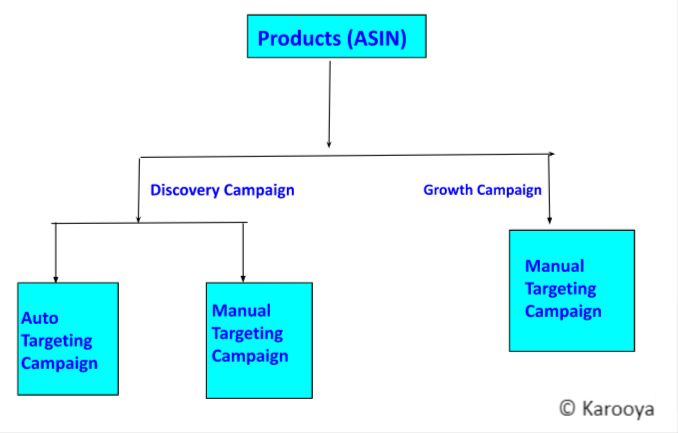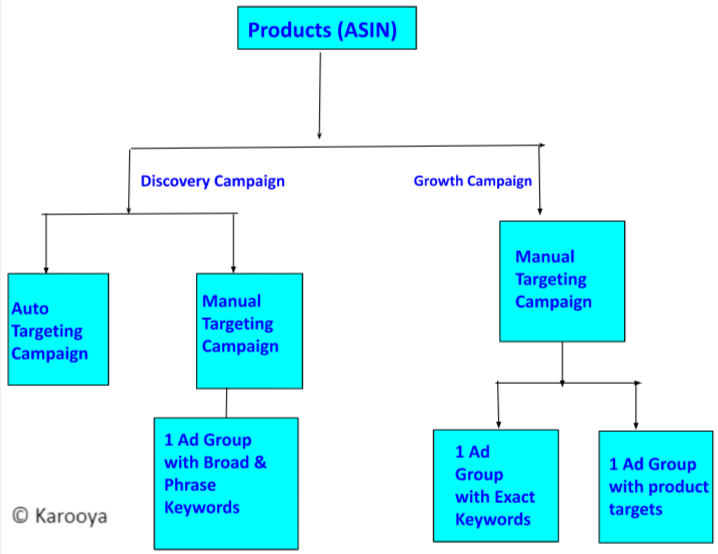Amazon PPC has recently emerged as a major ad platform. It gives sellers the chance to move their product listings ahead of their rivals. But setting up the right campaigns and managing them efficiently can be challenging.
Here, we are going to propose a structured approach that can make it easy to set up, manage and grow your ad campaigns.
Two Important Tasks of an Advertiser
An advertiser must do two things in order to manage effective PPC campaigns:
- Identify new traffic (a search theme or a product page) that converts well
- Displaying their ads as frequently as possible to boost sales.
Arrange your campaigns by taking into account the two aforementioned objectives. For each product, create two sets of campaigns to achieve these two goals.
- Two Discovery campaigns
- One Growth Campaign
Note: We have named these campaigns Discovery campaigns and Growth campaigns to understand them well
Setting up Discovery Campaigns
The purpose of discovery campaigns is to locate fresh search terms and new product detail pages to display ads on. Both, Auto and Manual Targeting have their own benefits. With the auto-targeting campaign, Amazon will display your ads for the majority of search terms and product pages related to your business. In order to specifically target particular search themes, you might also wish to set up a manual campaign. You can supplement this campaign with low-intent, top-of-funnel keywords.
Setting up Growth Campaigns
Closely monitor search term reports of discovery campaigns. Learn which product pages and search terms result in conversions. Move them to growth campaigns if they successfully drive conversions for, say, two to three weeks. Search query goes in as Exact Keyword in one ad group and Product page (ASINs) goes to the other ad group as product target.
Manage the Campaign Budget and Bids
It is important to keep the budgets of discovery campaigns low. Block search themes that are consistently performing poorly by adding them as negative keywords. Keep the bids low. Increase bids gradually just enough to keep attracting new traffic.
Keep increasing the budget of the growth campaign as long as the RoAS remains within the acceptable range. Monitor performance of the keywords and product targets; and raise bids as long as the RoAS is acceptable.
Separate Keywords by Match Types in Different Ad Groups
You can keep your keywords in a single ad group if there aren’t enough of them and it’s doable to adjust bids at the keyword level. But, as the number of keywords grows, and/or if you wish to manage bids at the ad group level, you may reorganize them accordingly. All the match types have pros and cons so using them appropriately will deliver accurate and desired results.
Product targeting makes it possible to select specific products, brands, categories, or any features of the other products which are relevant to the product displayed in your ad. For instance, if your product is a “Lipstick“, you can decide to target the “Fashion and Beauty” category. Additionally, you have the option of focusing on comparable product brands, price points, reviews, or variations.
Use Karooya to Manage and Grow Ad Campaigns
You can use Karooya to archive daily search term data in your Amazon Ads account and access it at any time in the future. Use Karooya to generate New Opportunities reports and Great converting keywords reports for your discovery campaigns to identify new keywords and product targets for the growth campaigns.
You can also use Karooya tools to identify irrelevant and poorly performing traffic and block it by adding negative keywords and negative product targets. This will help to reduce your wasted ad spend and improve ACoS. Our Negative Keywords Tool for Amazon Ads provides negative keyword suggestions at the campaign and ad group levels.
Related Links
- 7 Amazon Ads Default Settings That Advertisers Must Check
- Best Practices To Promote Your Amazon Products With Google Ads
- How To Import Amazon Attribution Data In Google Ads








Stop the wasted ad spend. Get more conversions from the same ad budget.
Our customers save over $16 Million per year on Google and Amazon Ads.